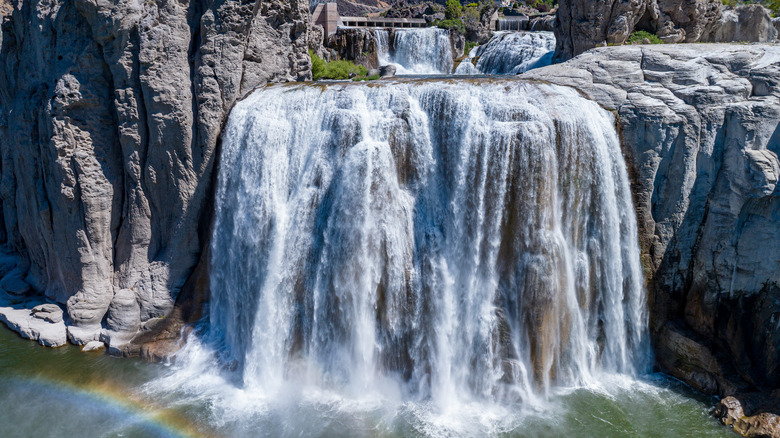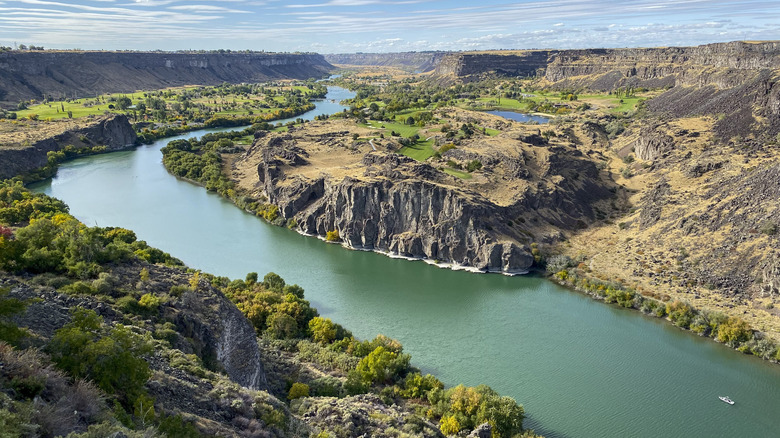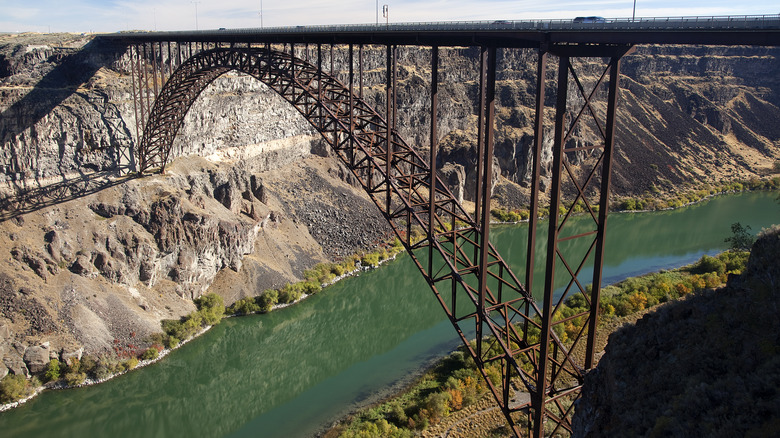'Niagara Of The West' Is An Overlooked Majestic Waterfall In Idaho Offering Year-Round Beauty
Though it lacks the majestic ocean beaches, inlets, and perfect little islands of its Pacific Northwest neighbors, landlocked Idaho has no shortage of scenic beauty. From the rugged wonder of the Sawtooths to the deep frigid waters of Lake Pend Oreille, the Gem State delivers the goods and then some when it comes to nature in its purest form.
While mountain pursuits remain the name of the game in Idaho, its many rivers are worthy attractions in their own right. Chief among these is the Snake. Beginning in Wyoming and winding nearly 1,080 miles before its eventual confluence with the Columbia in Washington State, Snake River stretches across the breadth of Idaho at its widest point.
The Snake boasts many attractions along its route, though none may be more breathtaking than Shoshone Falls. Situated just outside of the town of Twin Falls, this 212-foot set of cascades is actually higher than the much more famous Niagara Falls. During peak flows the water pours over the basalt rock rim in roaring blasts, enveloping the canyon in a lingering, otherworldly mist. This makes Shoshone Falls very much worth checking out, not just for the natural spectacle, but also due the fact that the area is rich in active, outdoor pursuits for nature-enthusiasts of all stripes.
Witness the raw power of Snake River firsthand
Shoshone Falls is thought to have formed around 14,500 years ago, when catastrophic floods inundated the area during the Pleistocene Ice Age. Long an important fishing spot for local indigenous people, the falls were first documented by Europeans in the 1840s. In the early 1900s, the local community lobbied Congress in an attempt to get the falls protected as a national park, but lawmakers never moved forward with any legislation.
Today, the falls can be accessed via local roads leading out of Twin Falls. There is a viewing platform that allows visitors to get up close for that perfect Instagrammable shot in safety and comfort, along with a swimming area, and picnic spots where you can take in the falls while taking down some food. Despite its impressive natural form, Shoshone Falls hasn't remained untouched by the hand of modern man. The Snake River is home to many dams and is used widely as a source of irrigation for local agriculture, which drastically affects the river levels. This, along with the varying amount of snowpack each winter, means that the water volume at Shoshone Falls ranges from a full, relentless blast to at times a mere trickle. To see the falls at their most powerful, it's best to visit in the spring or early summer.
Things to do and see around Shoshone Falls
While Shoshone Falls is a certainly a wonder, it can also be a good excuse to explore the area. The 8.2-mile Canyon Rim Trail offers stunning vistas of the falls and wide canyon for hikers, joggers, and cyclists, including the spot where notorious daredevil Evel Knievel attempted to jump the gorge in 1974. Nearby Dierkes Lake is also a great place for swimming, picnicking, barbecuing, and fishing.
While you're there, make sure to check out the Perrine Memorial Bridge. This impressive 1,500-foot-long truss arch structure stretches 476 feet above the river and is a launching point for BASE jumpers, who leap off the bridge and deploy parachutes on the way down. For the less adventurous among us, the bridge has a pedestrian lane that allows for public access and awesome views of the Snake River Canyon and surrounding area.
The canyon is also an ideal place for kayaking and canoeing. Centennial Waterfront Park has easy river access, along with rental facilities. And when you're ready for more urban charms such as great local restaurants, head north two hours to Idaho's charming capital city Boise, which is one of the fastest-growing communities in the United States.


